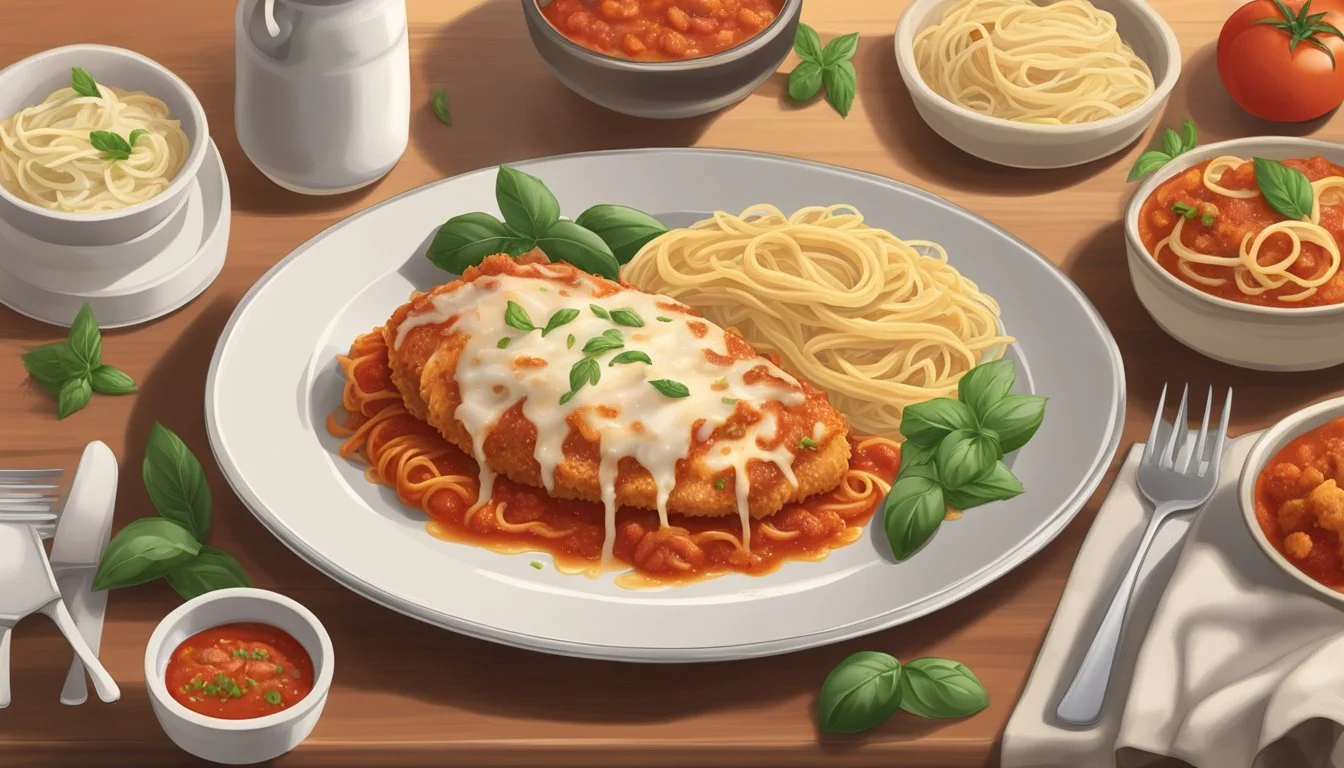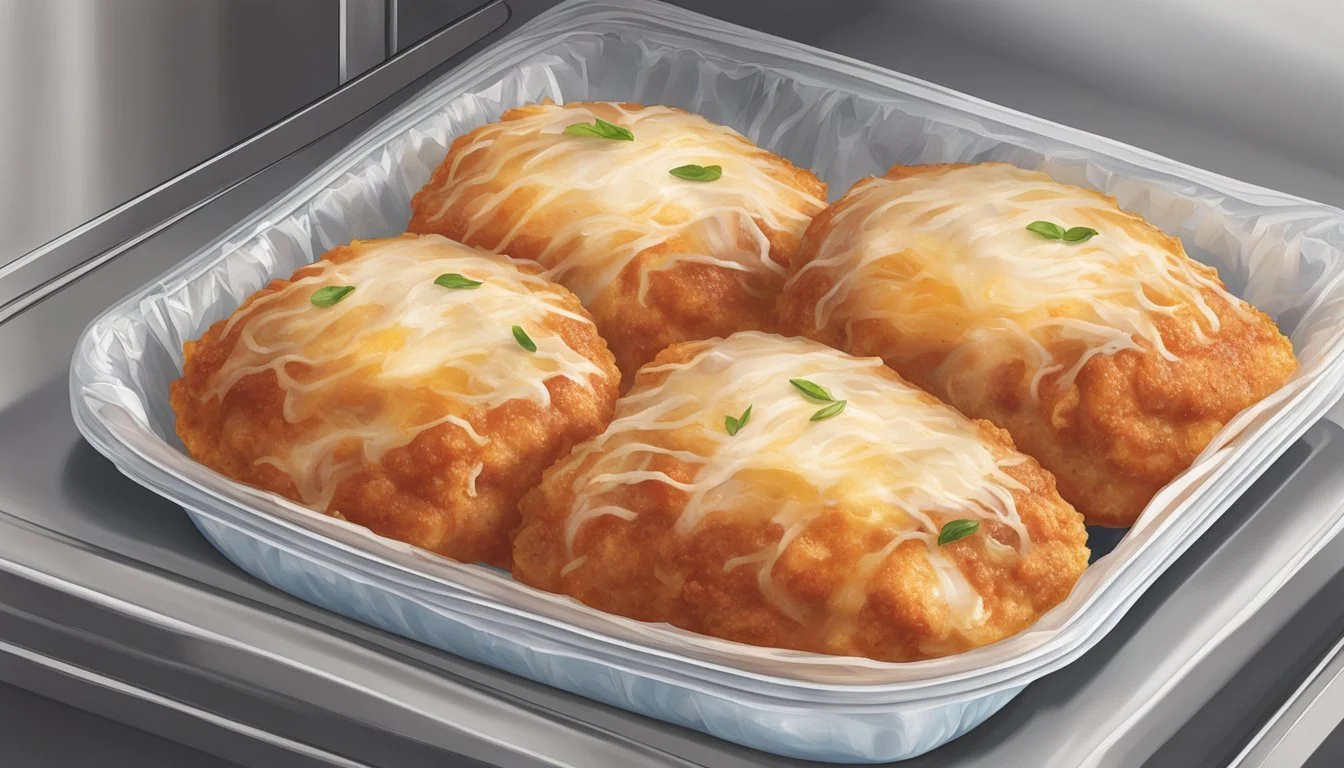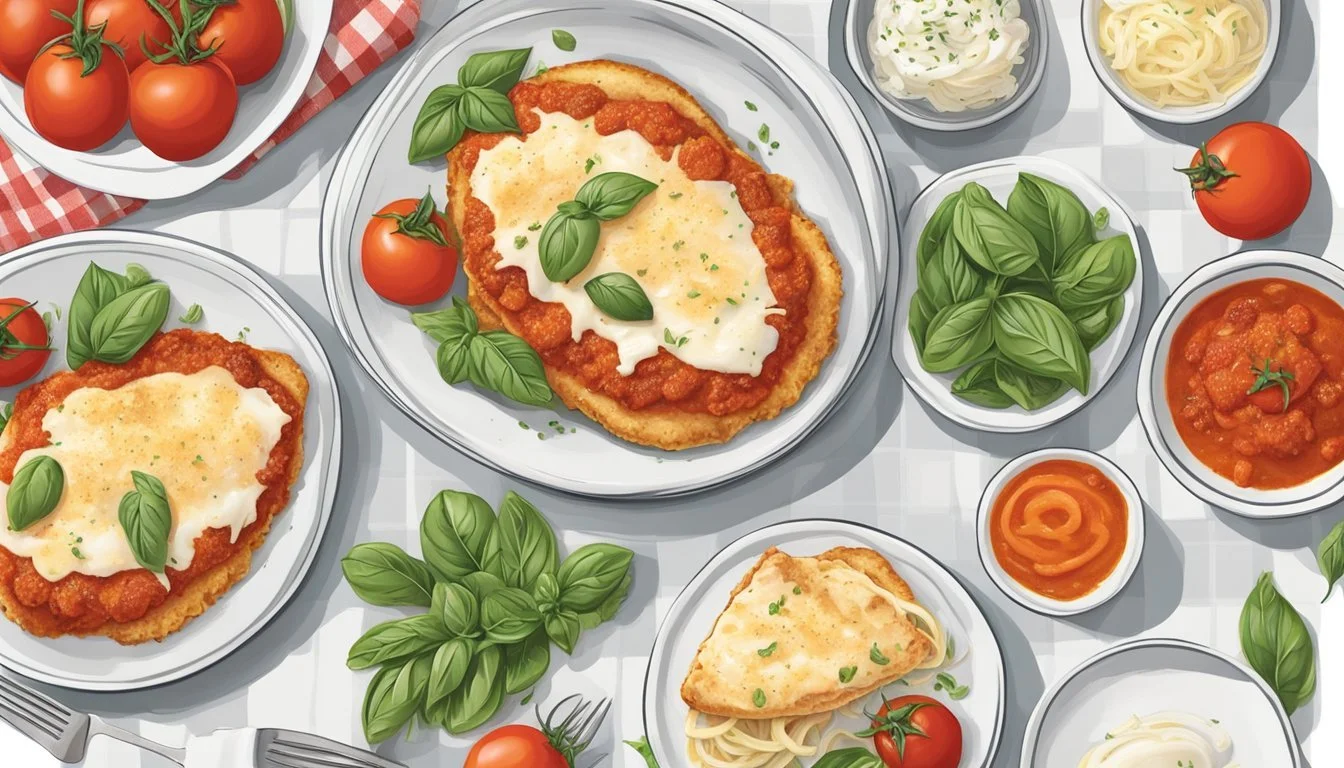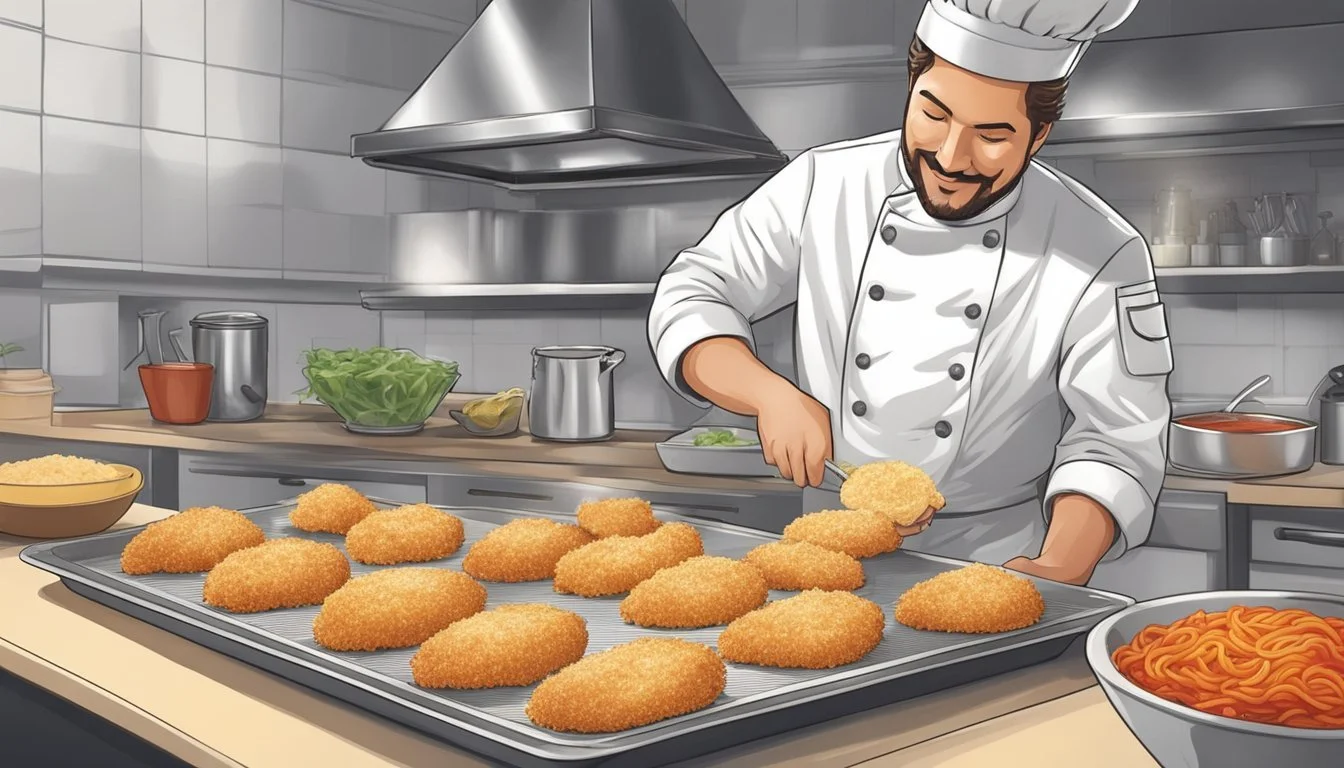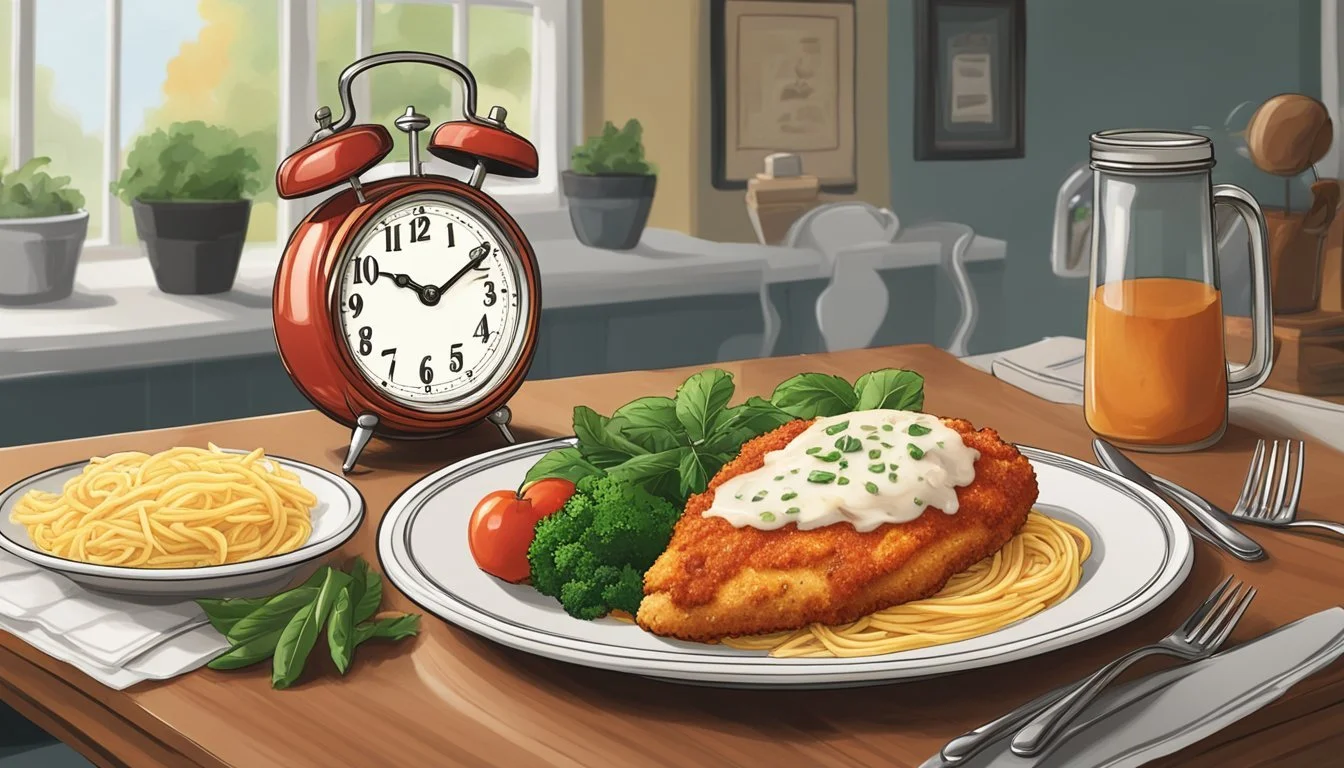How Long Does Boston Market Chicken Parmesan Last?
Storage Tips and Guidelines
Boston Market's Chicken Parmesan is a popular choice for those who enjoy a quick and tasty meal at home. The shelf life of this frozen dish is important for consumers to know. When stored in the freezer at 0°F, Boston Market Chicken Parmesan can last up to six months without losing quality.
For those who prefer to keep it in the fridge, the cooked dish should be consumed within 3-4 days to ensure it remains safe to eat. It's essential to follow proper storage guidelines to maintain the best taste and texture.
Knowing how long Boston Market Chicken Parmesan lasts can help you plan your meals better, reducing waste and ensuring you always have a delicious dinner ready when needed. This post will provide more insights into storage tips and best practices for this convenient frozen meal.
Understanding Chicken Parmesan
Chicken Parmesan, also known as chicken parmigiana, is a classic Italian-American dish made with lightly breaded chicken cutlets, topped with rich marinara sauce and melted cheese. This section explores its components and popular variations.
Components of Chicken Parmesan
Chicken Parmesan consists of a few key components. The foundation is lightly breaded chicken cutlets. The breading typically includes flour, egg wash, and breadcrumbs. Each cutlet is coated thoroughly before frying until golden brown. This creates a crisp base for the dish.
The next component is the rich marinara sauce. Made from tomatoes, garlic, herbs, and onions, this sauce adds a zesty flavor that complements the chicken. The sauce is generously spread over the breaded cutlets.
Cheese is the final essential component. A combination of mozzarella and Parmesan cheese is commonly used. Mozzarella melts smoothly, while Parmesan adds a sharp, tangy finish. The cheese is melted under a broiler or in an oven until bubbly and slightly browned.
Popular Variations
Chicken Parmesan has many popular variations. One common version is eggplant parmigiana, where eggplant slices replace the chicken. This makes for a vegetarian-friendly option with a similar flavor profile.
Another variation includes different types of cheese. Instead of the classic mozzarella and Parmesan, some recipes use provolone, Romano, or even ricotta for added richness and texture.
Sauces can also vary. Some versions might include a more robust tomato sauce with additional spices, or a creamier Alfredo sauce for a different twist. Moreover, presentation might change, from serving the dish over pasta to placing it in a sandwich format, making it versatile for different meal settings.
Storing Chicken Parmesan
Proper storage of Chicken Parmesan is essential to maintain its flavor and to prevent the growth of harmful bacteria. This guide will outline how to refrigerate and freeze Chicken Parmesan safely.
Refrigeration Guidelines
Cooked Chicken Parmesan should be stored in an airtight container to maintain freshness and prevent contamination. Place the dish in the refrigerator within two hours of cooking to minimize the risk of bacterial growth.
Chicken Parmesan can last up to four days in the fridge. Always check for signs of spoilage before consuming, such as an off-odor or visible mold.
Container: Airtight
Max Storage Duration: 4 Days
Temperature: Below 40°F (4°C)
Freezing Chicken Parmesan
Freezing extends the shelf life of Chicken Parmesan significantly. When stored correctly in an airtight container or freezer bags, the dish can last for 2-3 months in the freezer. Ensure the Chicken Parmesan is completely cool before freezing to prevent ice crystals from forming, which can ruin the texture.
Container: Airtight container or freezer bags
Max Storage Duration: 2-3 Months
Temperature: 0°F (-18°C) or below
When ready to eat, thaw the chicken in the refrigerator overnight before reheating it in the oven. This method helps maintain the dish's quality and safety.
Safety and Freshness
Maintaining the safety and freshness of Boston Market Chicken Parmesan involves controlling bacteria growth and recognizing signs of spoilage. Proper storage conditions are essential to ensuring that the dish remains safe to eat.
Controlling Bacteria Growth
Ensuring food safety requires maintaining an internal temperature that inhibits bacterial growth. Cooked chicken should be kept at or below 40°F (4°C) in the refrigerator. If storing leftovers, they should be refrigerated within two hours of cooking to reduce the risk of bacteria proliferation.
Freezing is an effective method to extend shelf life. Frozen Chicken Parmesan kept at 0°F (-18°C) or below can last up to six months, though flavor and texture may degrade over time. Always ensure food is in airtight containers or freezer bags to prevent contamination and moisture loss.
Signs of Spoilage
Recognizing spoilage signs is crucial in determining if Chicken Parmesan is still safe to consume. Spoilage indicators include off-putting odors, such as a sour or rancid smell. Discoloration, slimy texture, and mold growth are other signs that the dish is no longer edible.
Checking the texture is also important. Fresh Chicken Parmesan should feel firm, not slimy. If it looks or smells questionable, it is prudent to discard it to avoid potential foodborne illnesses. Always prioritize health and safety by following these guidelines closely.
Preparing Chicken Parmesan
Preparing Chicken Parmesan involves detailed attention to breading the chicken cutlets and cooking them to perfection. The steps include a careful breading technique and precise oven cooking instructions to achieve a crispy, flavorful dish.
Breading Technique
The breading process starts with chicken cutlets, which should be patted dry to ensure the coating adheres well.
Dip each cutlet in flour, ensuring it is lightly coated on all sides.
Next, dip the floured cutlet in beaten eggs, allowing any excess to drip off.
Finally, coat the cutlet in a breadcrumb mixture. The mixture can include seasoned breadcrumbs, grated Parmesan cheese, and a pinch of salt and pepper for added flavor.
Press the breadcrumbs into the cutlet to create a firm coating, which helps when frying.
Cooking Instructions
Preheat the oven to 375°F (190°C).
Lightly fry each breaded cutlet in a shallow pan with oil until golden brown on both sides. This typically takes about 3-4 minutes per side.
Transfer the cutlets to a baking dish. Spread marinara sauce over each cutlet and top with shredded mozzarella and more Parmesan cheese.
Bake in the oven. The cooking time is usually 20-30 minutes, or until the internal temperature reaches 165°F (74°C), ensuring the chicken is thoroughly cooked.
Check with a meat thermometer to avoid undercooking. Use caution when removing the dish from the oven as it will be very hot.
Reheating Instructions
To reheat Boston Market Chicken Parmesan, maintaining the flavor, texture, and quality is essential. These methods focus on achieving a uniformly heated dish with crispy breading.
Oven Method
Preheat the oven to 350°F (175°C). Place the chicken Parmesan in an oven-safe dish, ensuring it is not overcrowded. Cover the dish with aluminum foil to keep the moisture in. Heat for 15-20 minutes, or until the internal temperature reaches 165°F (74°C).
Checking the chicken halfway through and stirring if the sauce is unevenly heated can help. If the cheese on top needs more time to melt, uncover the dish for the last 5 minutes. This method helps maintain the crispiness of the breading while ensuring the dish is thoroughly heated.
Stovetop Method
To reheat on the stovetop, use a skillet with a lid. Place the chicken Parmesan in the skillet and add a small amount of marinara sauce or water to prevent drying out. Cover and heat on medium-low for 10-15 minutes.
Stir occasionally and ensure that the dish does not stick to the pan. Check that the internal temperature reaches 165°F (74°C). Adding a bit of cheese a few minutes before finishing can help enhance the overall taste. This method is quicker and helps keep the chicken moist while making the breading crispy.
Ingredient Insights
Understanding the ingredients in Boston Market's Chicken Parmesan can help determine its shelf life and quality. The key ingredients include chicken, cheeses, and a variety of herbs and spices.
Choosing Quality Chicken
The foundation of a good Chicken Parmesan is the chicken itself. Boston Market uses chicken breast or wing portions, sometimes enhanced with a solution for better flavor and moisture retention. This solution may include water, salt, sugar, chicken stock, garlic powder, natural flavors, maltodextrin, and carrageenan.
Selecting high-quality chicken ensures tenderness and prevents dryness. Fresh chicken should have a light pink color, firm texture, and no unpleasant odor. The enhanced solution helps maintain moisture, which is crucial for the prolonged storage of prepared meals. Properly stored chicken can last in the refrigerator for up to 3-4 days.
Selecting Cheeses
Parmigiana and mozzarella cheeses are central to Chicken Parmesan. Parmigiana cheese offers a sharp, nutty flavor and melts well, creating a golden crust. It's typically grated and sprinkled over the dish to form a crispy layer.
Mozzarella, known for its creamy texture and mild taste, provides the signature stretchy cheese pull. It melts smoothly, blending with the marinara sauce and chicken. Fresh mozzarella is ideal as it has higher moisture content, ensuring the dish remains juicy. The combination of these cheeses adds depth of flavor and enhances the dish's visual appeal. Properly stored cheese can remain fresh in the fridge for 1-2 weeks.
FAQs on Chicken Parmesan
How do you cook Boston Market Chicken Parmesan? Boston Market Chicken Parmesan can be cooked in the oven or microwave. For the oven, preheat to 375°F and bake for 25 minutes. Stir the pasta and rotate the chicken, then bake for another 14 minutes. In the microwave, remove the tray from the carton but do not pierce the film. Cooking times may vary.
What temperature should Chicken Parmesan reach to be safe? Chicken Parmesan should reach an internal temperature of 165°F (74°C) to be considered safe to eat. Always use a meat thermometer to check the internal temperature.
Can you reheat Boston Market Chicken Parmesan? Reheating Boston Market Chicken Parmesan is not recommended as specified on the packaging. If you must reheat, make sure to transfer the food to a microwave-safe dish and heat thoroughly.
How long does Boston Market Chicken Parmesan last in the fridge? Boston Market Chicken Parmesan can last 3-4 days in the refrigerator. Store it in an airtight container to maintain freshness and avoid contamination.
Can you freeze Chicken Parmesan? It's possible to freeze Chicken Parmesan. Make sure it's well-wrapped or in an airtight container to prevent freezer burn. Consume within 2-3 months for the best quality.
Is it safe to prepare Chicken Parmesan ahead of time? Yes, you can prepare Chicken Parmesan ahead. Bread the chicken cutlets and store them in the refrigerator for up to 24 hours before cooking. This can save time on the day you plan to serve the meal.
Serving Suggestions
When preparing Boston Market Chicken Parmesan, considering how to elevate the meal with ideal pairings can significantly enhance the dining experience. Focus on complementary foods such as pasta and other delicious side dishes.
Pairing with Pasta
Spaghetti is a classic pairing for Chicken Parmesan. The long, thin strands of spaghetti capture the marinara sauce well, ensuring every bite is flavorful. To prepare, cook the spaghetti in lightly salted boiling water until al dente, then drain and toss with a little olive oil to prevent sticking.
Fresh pasta is another excellent choice. Its delicate texture offers a more luxurious mouthfeel. Simply cook fresh pasta according to package instructions, usually for 2-3 minutes in boiling water. Choose varieties like fettuccine or tagliatelle to provide a robust base for the Chicken Parmesan. Adding a sprinkle of freshly grated Parmesan and chopped basil can elevate the dish.
Accompanying Side Dishes
For balanced flavors and textures, consider steamed or roasted vegetables. Options like broccoli, asparagus, or bell peppers provide a healthy contrast to the rich Chicken Parmesan. To roast, toss vegetables in olive oil, season with salt and pepper, and bake at 400°F for about 20 minutes.
Garlic bread complements the meal by offering a crispy, garlicky side. Simply toast slices of baguette, rub with fresh garlic, and spread with butter. A light sprinkle of parsley or Parmesan can enhance its flavor.
Salads also work well, particularly a simple Caesar salad or mixed greens with vinaigrette. These provide a refreshing counterpart to the main dish, keeping the meal light and balanced. Remember to use fresh, crisp ingredients for the best texture and taste.
Making Chicken Parmesan at Home
Creating Chicken Parmesan in your kitchen can be an enjoyable and rewarding experience. A close look at the methods and ingredients used can help achieve a delicious result whether you make everything from scratch or use some store-bought components.
Homemade Vs. Store-Bought
Homemade Chicken Parmesan allows for control over ingredients and cooking methods, which can result in a fresher and potentially healthier dish. By choosing high-quality chicken breasts, fresh marinara sauce, and a combination of mozzarella and Parmesan cheese, one can elevate the dish's flavor.
On the other hand, store-bought versions, such as those from Boston Market, offer convenience and consistency. They typically include pre-breaded and pre-cooked chicken, which can save time but may contain preservatives and additives. Choosing between these options depends on the balance of convenience and preference for ingredient control.
DIY Breading Process
The breading process is crucial for a crispy and flavorful Chicken Parmesan. Start by dipping the chicken breasts in beaten eggs to ensure the breadcrumbs adhere properly. Use a combination of Italian-style breadcrumbs and Panko for a crunchy texture.
Season the breadcrumbs with salt, pepper, and grated Parmesan cheese to enhance the flavor. Press the chicken firmly into the breadcrumb mixture, ensuring an even coating. Fry the breaded chicken in a hot skillet with oil until golden brown on both sides. This step creates a crispy exterior that holds up well during baking.
After frying, layer the chicken with marinara sauce and cheese before baking until the cheese is melted and bubbly. This approach ensures a well-balanced and mouthwatering Chicken Parmesan every time.


